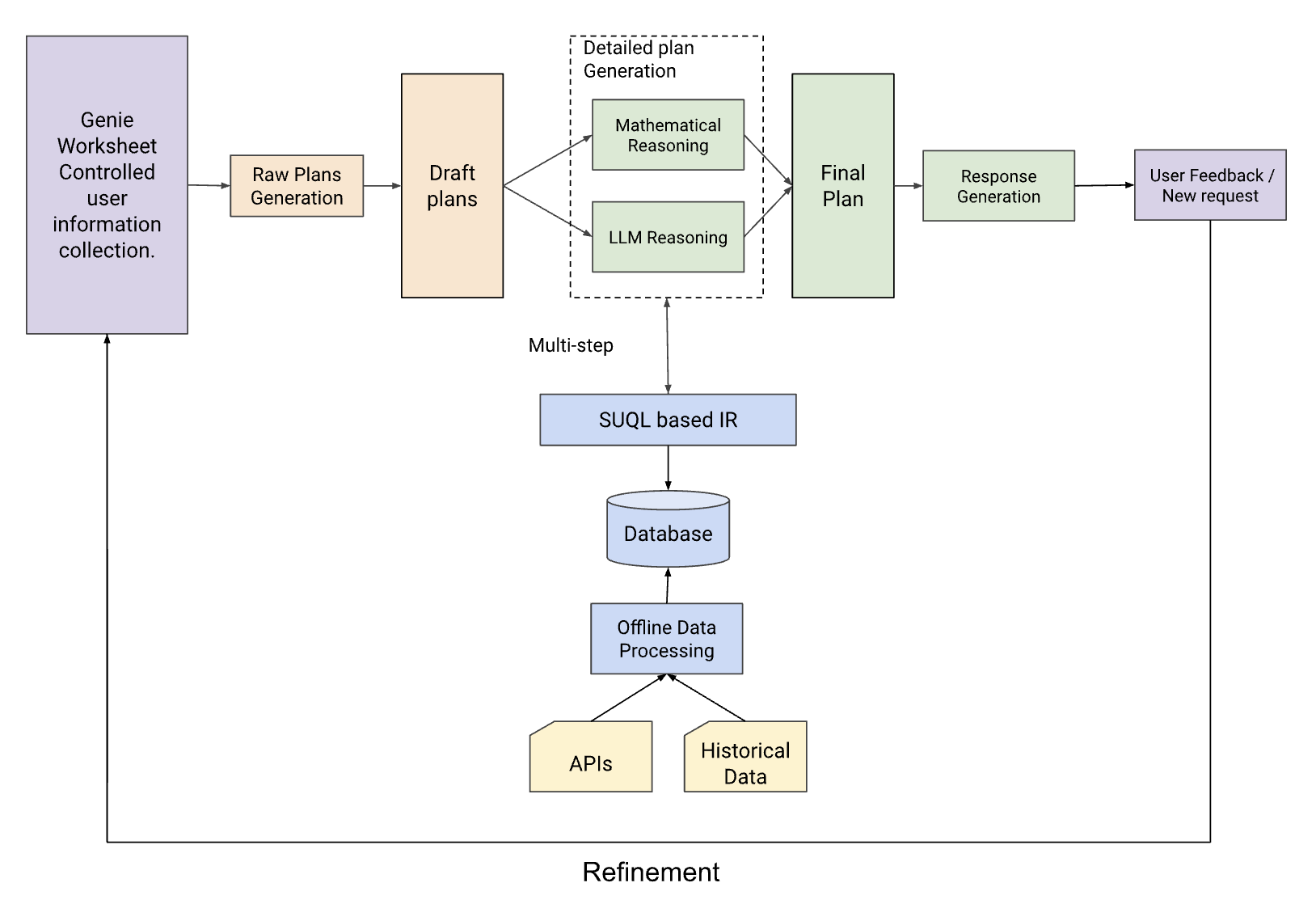MyInvestPath: Investment Conversational Virtual Agent with Deep Learning
In today's complex financial landscape, individual investors often struggle with an overwhelming array of investment options and limited access to affordable, high-quality guidance. To address the pain point, we present a conversational AI agent that is based on Large Language Models (LLMs) and various advanced conversation management and data retrieval technics to deliver personalized, accessible investment advice aligned with users’ financial goals and constraints. Our approach integrates multiple components into a cohesive workflow: user information collection via designed Genie Worksheet, offline embedding and free-text server preparation (FAISS and FinQA), SUQL-based advanced search and filtering, and LLM reasoning steps that combines mathematical calculations with LLM-generated qualitative insights. This layered process allows the AI agent to make investment recommendations tailored to user financial goals and evolving preferences.

SENTINEL: A Heterogeneou Ensemble Framework for Detecting AI-Generated Text
The rapid advancements in large language models (LLMs) such as GPT-4 and GPT-4o have made it increasingly challenging to distinguish AI-generated text from human-written content. Traditional methods often fall short in capturing the complexities and nuances of these advanced LLMs. To address the challenges posed by advanced LLMs, we introduce SENTINEL, a novel heterogeneous ensemble framework that combines deep learning techniques with classical algorithms for effective AI-generated text detection.

Adapting U-Net for Brain Tumor Classification from MRIs
Brain tumors are among the most fatal cancers, making early detection crucial. Current methods for gliomas are invasive, costly, and often inaccurate. Our project uses a U-Net-inspired model to classify gliomas with MRI images, leveraging a large dataset and additional labeled images for enhanced accuracy. Preprocessing involved resizing and augmenting images, and model training included cross-validation and comparison against established models. Our model achieved high accuracy, with room for improvement in classifying gliomas and meningiomas. Heat maps visualizing critical MRI regions further enhanced our analysis. Overall, our project offers a non-invasive method for glioma classification, improving diagnostic accuracy and patient outcomes. Future research should address dataset biases and model generalizability for better clinical applicability.

Daily Water Consumption Forecasting Using Machine Learning Techniques
This study addresses water resource management challenges in East Asia's subtropical region, experiencing rapid population growth and changing weather patterns. Focusing on the potential of machine learning to enhance urban sustainability, we developed predictive models to forecast daily water consumption. We utilized advanced techniques, including Support Vector Machine (SVM), XGBoost, and Recurrent Neural Networks (RNNs), to compare their efficacy in predicting water usage. The models were evaluated using R-squared, Mean Squared Error (MSE), and Mean Absolute Error (MAE) metrics. Results showed that XGBoost outperformed other models with superior accuracy and minimal errors. This research highlights the effectiveness of machine learning in environmental applications and sets a new direction for future studies. Future work will aim to increase task complexity and explore hybrid models, combining neural networks with traditional algorithms, to develop robust solutions for sustainable water management.

© Haochengf.com. All Rights Reserved. Designed by Michael Fan


